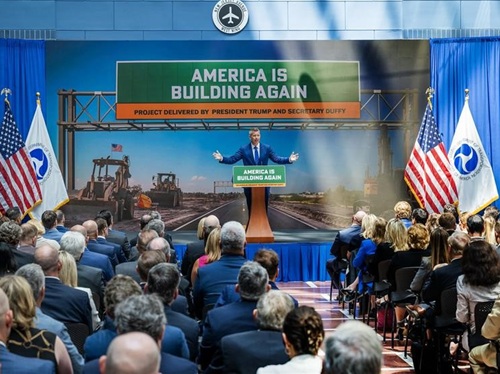To improve the ability of people to move from point A to point B in the United States, addressing societal inequities in transportation must come first. That is according to a panel of state department of transportation experts who participated in a knowledge session at the American Association of State Highway and Transportation Officials 2022 Annual Meeting in Orlando in October; a session sponsored by EXP.
[Above photo by AASHTO]
“There are inequities in our society – some obvious, some not. And unless you are really affected by it directly, you can’t relate,” explained Paul Ajegba, director of the Michigan Department of Transportation and AASHTO 2022-2023 vice president.

That is why he stressed that “everything” in transportation must first start with equity. “If you don’t have the right people represented at the table, then affected segments of society do not have voice in transportation plans that impact them,” Ajegba emphasized.
“This is part of the paradigm shift going on now in this country. No longer are we focused first on infrastructure – now we must start the planning process with the end user in mind,” he said. “The public is demanding that we do things differently. For example, they want more multimodal communities with 36-foot wide sidewalks for scooters and walking. That is part of our new reality.”
Dr. Shawn Wilson, secretary of the Louisiana Department of Transportation and Development and immediate AASHTO past president, noted that in terms of equity – race, family, economic status, gender – there is a legacy of “impacts” that often occur no different that fallowed “red-lining” within communities in years past. “That’s why we need to talk about this issue of equity so can do something about it and perhaps be better than before,” he explained.

“It’s about changing the framework of what we have to do,” he emphasized.
“That means we have to change the way we spend on infrastructure and how make those planning decisions. Because if the bus does not get you to where the jobs are, if there are no shelters for waiting in the rain, then transportation is a barrier, not a help,” Wilson said.
He added that transportation agencies must remember that when they start the process of improving equity in the planning process, they cannot expect to address everything immediately. “Because you cannot give everyone the same medicine and expect the same results; for not all communities have the same transportation amenities,” Wilson pointed out. “The lens of equity will help us understand the issues. But we can’t be everything to everybody – we also must understand our limits, politically, geographically, financially, but do what we can within them.”
Kim Collins, deputy commissioner of the Minnesota Department of Transportation, said her agency developed and deployed an “equity lens” for its projects three years ago, which helped it take a fresh look at the ways men and women use transportation differently, for starters.

“We need to step up and show that we are listening and that we care,” she stressed. “We must learn to share decision-making power and be willing to revisit housing and land-use policies. We have to be courageous and be willing to fail in this effort, too, in order to progress.”
“It is vital that we acknowledge inequities of the past; for we cannot move forward to the future if we do not,” added Matthew Marcou, chief of staff for the District Department of Transportation for Washington, D.C. “That means creating a culture of equity within state DOTs. We all have a culture of safety; so now we have to do the same for equity. If we do, we’ll get the outcome we want.”
He noted that the District DOT uses an equity assessment tool as part of that process, to analyze and determine the value transportation can bring to most communities; especially the ones with the most needs. “Because what you measure for is what you design for,” he emphasized. “That means measures things like quality of life, bike throughput, and transit throughput. Those are the things that will help us fully integrate equity into transportation.”
 Top Stories
Top Stories


